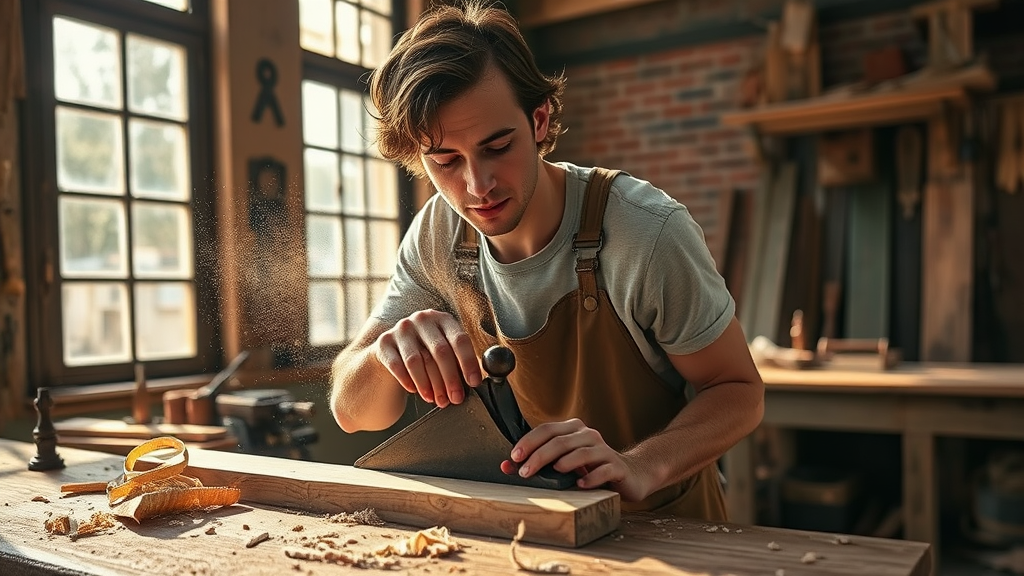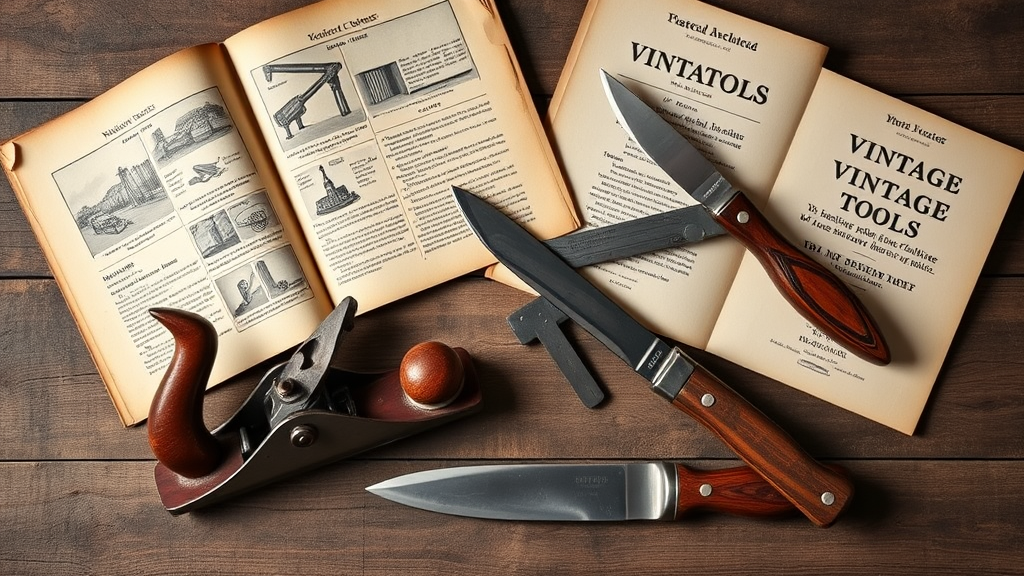Vintage Trade Tools for Beginners: Timeless Skills & Sustainability
The rasp of a 1930s hand plane biting into oak echoes through a Brooklyn workshop. Here, a new generation of carpenters is rediscovering what their grandparents knew: old tools hold timeless lessons. For beginners in the trades, these functional relics are essential teachers that offer craftsmanship, sustainability, and a direct link to your craft’s history.
What Makes a Tool Vintage or Collectible?
Vintage tools are typically 50+ years old, while "antique" refers to items over a century old 12. Collectibles gain value through rarity or craftsmanship, not just age. Think limited-edition woodcarving knives from a 1920s blacksmith 1.
Materials Tell the Story
Early 20th-century tools used indestructible materials like high-carbon steel and rosewood. Your great-grandfather’s hand plane likely survived decades because its blade was forged to outlive the user 4. Modern tools favor lightweight alloys, but vintage ones show how material choice shaped entire trades.

Why Beginners Need Vintage Tools
Starting your trade journey with vintage gear offers unique advantages most instructors won’t mention.
Skills No YouTube Tutorial Teaches
Restoring a 1940s chisel teaches you to read grain patterns and adjust angles instinctively. As Maine woodworker Emma Torres notes while honing a block plane, "Every scratch tells me how the last craftsman worked." This hands-on learning builds muscle memory power tools skip 56.

Rodney Williams found his $35 Stanley No. 4 plane outperformed his $200 modern model after a weekend of tuning. "It’s like getting apprenticeship knowledge baked into the metal," he says.
Budget-Friendly and Planet-Smart
Used tool markets overflow with deals. A sharpened 1950s backsaw often costs less than a disposable big-box version. By choosing vintage, you’re keeping functional history alive and reducing landfill waste.
How Classic Tools Build Better Craftsmen
Old tools force you to slow down and think.
The Forgotten Apprentice System
Before power drills, apprentices spent years mastering hand tools. A 1920s dovetail saw demands the same precise strokes carpenters used on Colonial cabinets. This isn’t nostalgia, it’s how you develop the "eye" for spotting splintering wood or uneven joints 78.
Problem-Solving Built In
Modern jigs shield you from mistakes. Vintage tools don’t. Adjusting a 19th-century spokeshave’s blade depth teaches you to troubleshoot tear-out in real time. "It’s like the tool talks back," says metalworker Luis Rivera. "You learn to listen" 6.

Tools That Changed Their Trades Forever
Some vintage tools revolutionized workplaces:
- Disston’s D-8 Saw (1840–1917): Its tapered blade (thinner at the teeth for smoother cuts) let woodworkers slice dense hardwoods without binding 1011.
- Blacksmith’s Hardy Hole: This square anvil slot held tools for twisting metal, a simple feature still used in custom forge shops today.
- Cooper’s Barrel Adze: Curved blades from the 1700s allowed precise hollowing of staves, ensuring watertight barrels for global trade.
Finding Hidden Gems: A Starter Guide
Spotting treasure in flea markets takes practice:
- Seek Stamps and Secrets
Marks like "Stanley Rule & Level Co." on planes indicate pre-1920s quality. Unsure? Snap a photo and ask forums like r/VintageTools 12.
- Love the Patina
Surface rust often cleans up with vinegar soaks, but pitted metal means trouble. A sawplate should feel smooth as rough spots signal neglect 1314.
- Test the Grip
Shake hands with the tool. Does the wooden handle mold to yours? Worn curves mean generations of proper use, not damage 13.
Old Meets New in Today’s Shops
Smart tradespeople blend eras:
- 3D-Printed History: Restorers now scan broken press brake parts to print replicas, saving 1890s machines for modern production 16.
- Sustainable Credentials: With 68% of millennials prioritizing eco-friendly goods, vintage tools attract clients valuing heritage and ethics.
Keepers of the Craft
Collectors preserve trade wisdom through simple acts: soaking rusted wrenches in citric acid or rubbing linseed oil into ash handles. As tools historian Dr. Rachel Nguyen reminds us, "Each restored tool is a preserved language. Future craftsmen will need this vocabulary" 1718.
"Good tools ask two things: that you respect the past, and leave them sharper for the next person." – Unmarked engraving on a 1917 saw vise 1918
Conclusion: Your Turn to Hold History
That dented mallet wasn’t just dropped, it likely leveled stones for a 1940s bridge. By choosing vintage tools, you’re saving money and the planet, as well as apprenticing yourself to every craftsman who wielded them first.

